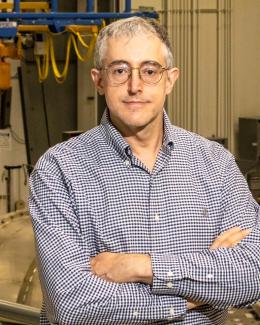Abstract
A major challenge in the design of oxide dispersion strengthened (ODS) FeCrAl alloys is the optimization of the fine-scale particle size distribution that provides both beneficial mechanical properties and irradiation resistance. To address this obstacle, the nucleation, growth, and coarsening of the fine-scale (Y,Al,O) nanoprecipitates within an ODS FeCrAl powder was studied using atom probe tomography (APT) and small-angle neutron scattering (SANS). Mechanically alloyed Fe10Cr-6.1Al-0.3Zr + Y2O3 wt.% (CrAZY) powders were heated in-situ from 20 to 1000 °C to capture the nucleation and growth of the nanoprecipitates using SANS. Furthermore, CrAZY powders were annealed at 1000 °C, 1050 °C, and 1100 °C for ageing times from 15 min to 500 h followed by either APT or magnetic SANS to study the structure, composition, and coarsening kinetics of the nanoprecipitates at high temperature. In-situ SANS results indicate nanoprecipitate nucleation and growth at low temperatures (200–600 °C). APT results revealed compositions corresponding to the cubic Y3Al5O12 garnet (YAG) stoichiometry with a possible transition towards the perovskite YAlO3 (YAP) phase for larger precipitates after sufficient thermal ageing. However, magnetic SANS results suggest a defective structure for the nanoprecipitates indicated by deviations of the calculated A-ratio from stoichiometric (Y,Al,O) phases. Particle coarsening kinetics follow n = 6 power law kinetics with respect to particle size, but the mechanism cannot be explained through the dislocation pipe diffusion mechanism. The potential effect of precipitate coarsening during pre- and post-consolidation heat treatments on the irradiation resistance of ODS FeCrAl alloys is discussed with respect to sink strength maximization.





